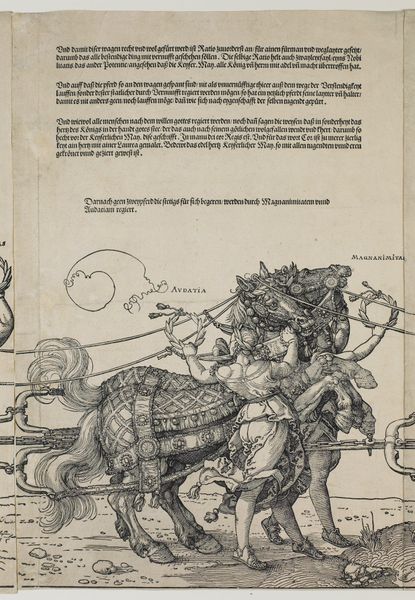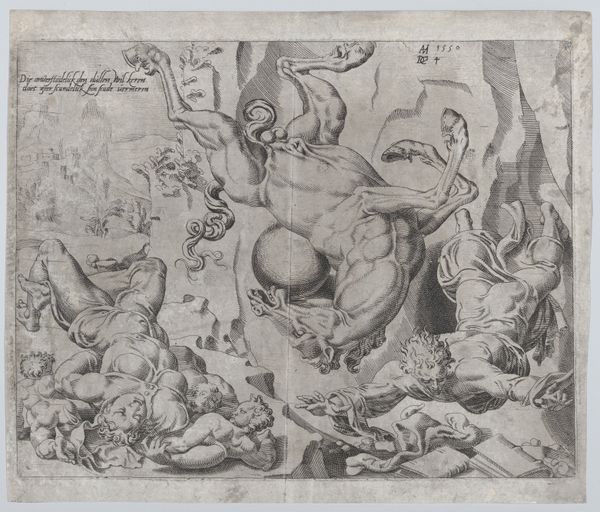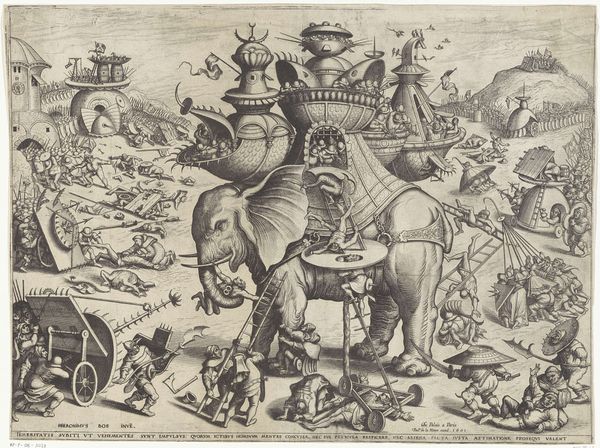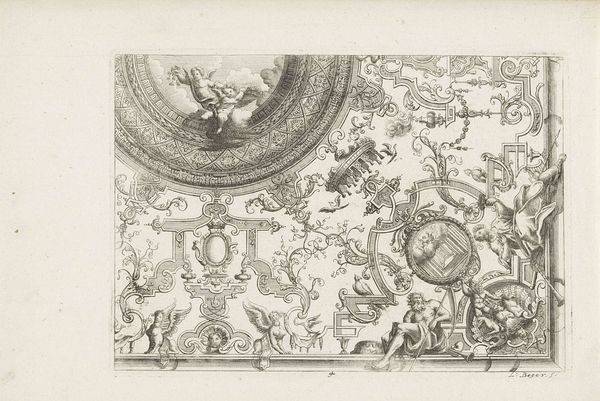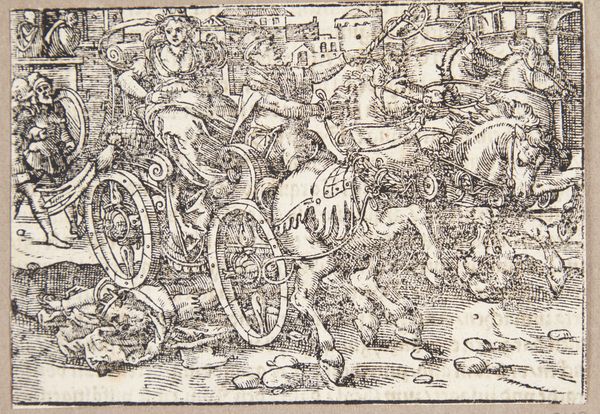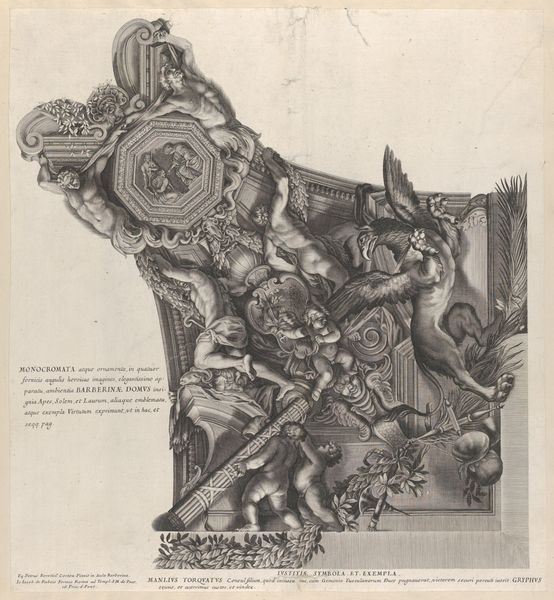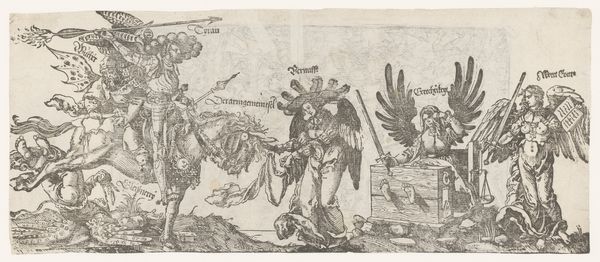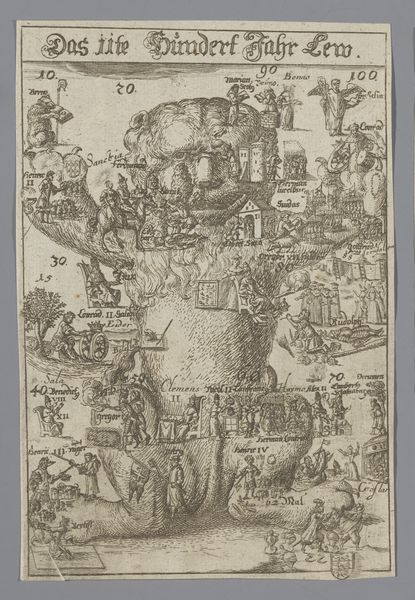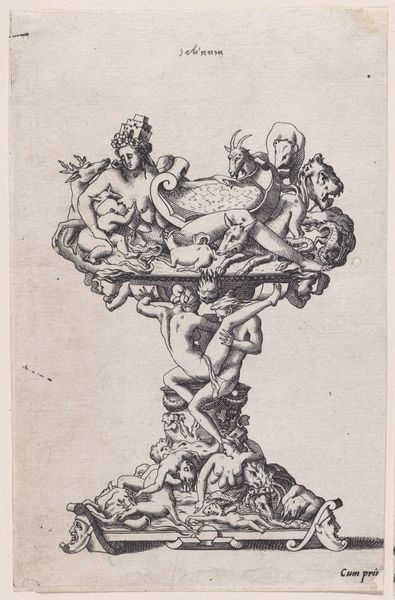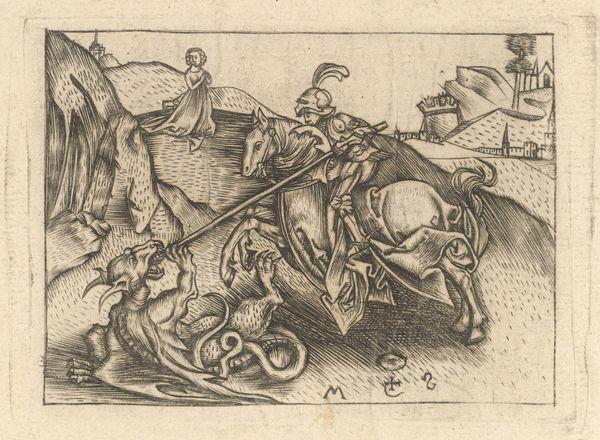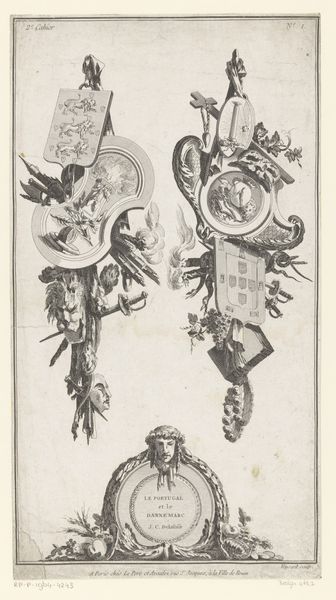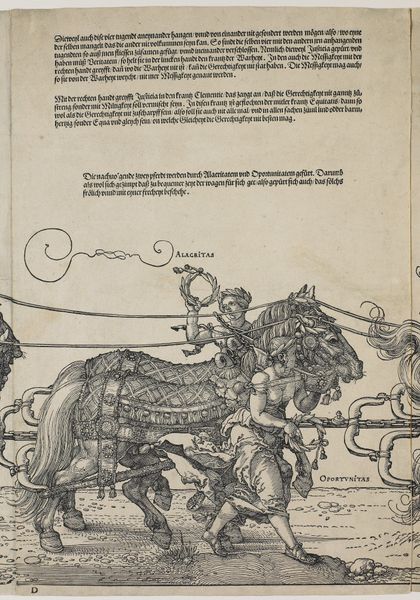
Large Triumphal Carriage of Maximilian I c. 1518 - 1522
0:00
0:00
graphic-art, print, woodcut, engraving
#
graphic-art
#
allegory
# print
#
11_renaissance
#
woodcut
#
history-painting
#
northern-renaissance
#
engraving
Dimensions: 16 1/16 x 12 in. (40.8 x 30.48 cm) (sheet)
Copyright: Public Domain
Curator: Looking at this print, I'm immediately struck by the sheer industriousness of it all, a testament to the workshop system. The detail! Editor: This is the "Large Triumphal Carriage of Maximilian I," made around 1518 to 1522, credited to Albrecht Durer but also assistants. It's a woodcut and engraving on laid paper currently residing at the Minneapolis Institute of Art. A pretty grand collaborative endeavor if you ask me, almost an early form of industrialized image-making. Curator: It's like a dream logic of power. This massive, ornate carriage pulled along by virtues themselves, goodness, glory... it’s utterly confident and yet teetering on the edge of absurdity. I feel the weight of expectation and the inherent precariousness of rule, it's a lovely tension. Editor: That “dream logic” comes from the complex production – someone had to carve each block. Consider the sheer physical labor— transferring a design of that complexity onto multiple wood blocks. It highlights the socio-economic context that enabled its creation. And remember, prints like these circulated, carrying imperial ideology with each impression sold or gifted. Curator: Absolutely! You see it almost as a form of propaganda; I am more moved by how deeply human are Durer’s struggles in this monumental task. I think it transcends its intention—the level of obsessive detail tips into something else—like a monk illuminating manuscripts, where the intention to praise shifts imperceptibly to being just deeply involved in the act of making, almost transcending it. Editor: That engagement has always been fraught with its own power dynamics, who is enabled to engage in this type of ‘transcendence’ due to wealth and resources is also something worth pausing over. Think about the labor needed just for materials—the paper, the inks—the whole network needed for Durer to get there! Curator: Very true. In this view, we look less to the sky and more to the earth; a network is being pulled forward and revealed; I'll certainly reflect upon it as a process from now on. Thank you! Editor: You’re welcome; I'm struck, in turn, by its ambition and by how it also reveals labor in art and history in such a striking way. A network as both the topic and the process itself!
Comments
minneapolisinstituteofart almost 2 years ago
⋮
Dürer's magnificent allegorical design for the Imperial chariot was originally commissioned in 1512 as the centerpiece of Maximilian's Triumphal Procession, one of the most ambitious projects in the history of the graphic arts. Dürer's elaborately embellished carriage was intended to form the climax of the entire procession, showering the Emperor in personal glory, while underscoring his dynastic power. The final fully elaborated drawing for the woodcut was completed only in 1518, and the woodcut remained unfinished at the time of the Emperor's death in 1519. In 1522, Dürer published the Triumphal Chariot himself as an independent woodcut dedicated to the Emperors Maximilian and Charles V. The print differs from the original design in the addition of printed text explaining the various symbolism of the work and a short history of its production. Dürer also omitted the Emperor's family from the composition, for after Maximilian's death it seemed fitting to interpret his "triumph," not as a dynastic manifesto but as a personal apotheosis.
Join the conversation
Join millions of artists and users on Artera today and experience the ultimate creative platform.
